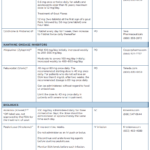In the study’s second phase, “we performed a review of the published medical literature to understand the accuracy of certain imaging techniques, such as ultrasound and DECT” in diagnosing gout, says Dr. Neogi. This phase looked at more than 900 patients and 24 worldwide data collection sites. The strength of association between having true gout and the data collected in this phase of the study was analyzed using standard statistical regression approaches.
“A diagnosis of gout was made in these patients if monosodium urate crystals were identified in synovial fluid or tophus tissue by an observer that had undergone a specially designed certification,” says Dr. Taylor. “This certification was important to be as sure as possible that the ‘gold-standard’ test of gout was as accurate as it could be.”
Then, the investigators asked a large group of international gout experts “to enroll patients with and without ‘crystal-proven’ gout, and statistically compared the features in the two groups of patients to determine which features best distinguish gout from other conditions that were similar to gout,” says Dr. Neogi. The participating physicians were asked to rank these cases in order of gout likelihood.
In the fourth phase of the study, the investigators asked the international experts to take all the information that had been gathered in the first three stages of the study, in addition to a review of additional gout cases submitted by experts, to develop the final classification criteria using a formal scientific process, says Dr. Neogi.
One issue raised by the investigators during the study was that it did not include some conditions often present in gout patients, such as kidney disease or metabolic syndrome, she says.
“The researchers who put these criteria together considered this issue very carefully. Classification criteria traditionally only include features of the disease, not other associated conditions. Furthermore, if one includes other associated conditions as part of the criteria to define gout, future studies would not be able to study the relationship between gout and these conditions,” she says.
The study “developed a framework for the most important clinical, laboratory, and imaging features that would help make a diagnosis of gout,” says Dr. Taylor. The investigators met for a two-day workshop to analyze the results of the study and discuss their conclusions just prior to the EULAR International Congress held in June 2014 in Paris.
Establishing a New Gout Standard
Unlike other rheumatologic conditions, gout has long had a gold standard for assessment: MSU crystal positivity. Although it has high specificity, its feasibility and sensitivity in gout assessment may not be adequate, the investigators note in their published findings.


